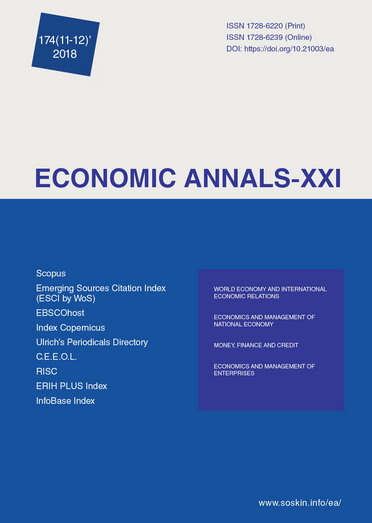Public-private partnership development in Kazakhstan: a case study based on international benchmarking
Public-private partnership development in Kazakhstan: a case study based on international benchmarking
Author(s): Ayapbergen Taubayev, Miras Kuttybai, Yulia Saifullina, Elena Borisova, Assel KabdybaySubject(s): Business Economy / Management
Published by: Institute of Society Transformation
Keywords: Public-private Partnership; Institutes; Mechanisms; Corporate Social Enterprises; Saryarka;
Summary/Abstract: The article deals with the development of public-private partnership in Kazakhstan on the basis of specialised institutional organisations, such as corporate social enterprises. The authors consider world experience of creating and functioning of regional development institutions, on the basis of which three main models of their organisation were determined. It has been established that Kazakhstan’s model of corporate social enterprises has not become a full-fledged institution of regional development because of the inconsistent policy of the government. Based on the analysis of the main indicators of 16 corporate social enterprises throughout Kazakhstan, it has been found that most of them are still at the investment stage of their development and do not provide direct support to the entrepreneurship in their regions. Using the latest data and materials available regarding the corporation Saryarka of Karaganda region, Astana and Akmola region, the main directions of investment activities of the institute of regional development were identified, which showed the implementation of predominantly operator functions to redistribute public investment resources. In such a way, 53 subsidiaries, affiliates and associated enterprises of CSE Saryarka cover a variety of areas of economic activity, from the housing and utilities sector to the agro-industrial complex, metallurgy and metalworking. However, CSE Saryarka gradually reduces its participation in the investment of its subsidiaries: if there were 5 units in 2012, then in the 2015-2016 there were 3 units left, namely, Industrial Park Metallurgy-Metalworking, LLP Arka, and LLP SZTS Abaysky. The amount invested by the corporation in the authorised capital of these companies was decreasing. The main reason for the reduction of this type of assets is the return of assets to participants and the impairment as a result of unprofitable activities of the subsidiaries. Obviously, the capabilities of CSE Saryarka for this type of activity are not fully utilised, since the corporation is obliged to work with companies that perform a number of social functions at the current stage, which prevents them from being commercially successful in the market. It is quite possible to expand such activities for the CSE by involving it not only as a founder of special quasi-state structures but also as an investor in profitable commercially successful firms. The main criteria for selecting projects for the implementation in the Saryarka group are not only its financial profitability but also its strategic importance for the region. According to their initial task, corporate social enterprises as institutions fostering regional development are created in the form of holding companies, and their main activity is aimed at attracting investments to the region required for the implementation of infrastructure and innovative projects and promotion of small and medium-sized businesses’ initiatives. However, the results of the study reveal systemic problems that prevent their absolute development as institutions fostering regional development. In view of the abovementioned facts, the authors of the research propose measures to address the related problems.
Journal: Економічний часопис - ХХІ
- Issue Year: 174/2018
- Issue No: 11+12
- Page Range: 51-57
- Page Count: 7
- Language: English

